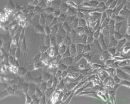(Press-News.org) CHAMPAIGN, lll. — 2012 marked the 40th anniversary of the Clean Water Act, which established regulations for the discharge of pollutants to waterways and supported the building of sewage treatment plants. Despite these advances, sewage remains a major source of pharmaceuticals and personal care products (PPCPs) and naturally occurring hormones found in the environment.
Many rural communities in the United States use aerated lagoon systems to treat their wastewater. The wastewater is pumped into at least one manmade aerated lagoon, in which oxygen-loving and anaerobic microorganisms remove many of the contaminants. The water is then pumped into a series of other lagoons. Finally, the resulting water, known as the effluent, is discharged directly into a receiving stream.
The drugs, chemicals and hormone contaminants such as ibuprofen, caffeine and ethinyl estradiol from urban sewage treatment plants have been studied and monitored widely, but their occurrence in rural lagoon treatment systems is often overlooked.
In a new study led by Wei Zheng, a University of Illinois senior research scientist at the Illinois Sustainable Technology Center, researchers determined the effectiveness of rural lagoon systems at removing these compounds from wastewater. The research was conducted jointly with the Illinois State Water Survey. The study appears in the journal Science of the Total Environment.
Scientists collected water samples in September and November from a rural wastewater treatment plant located in a small town in Illinois. The facility treats sewage wastewater in two aerated lagoons, using a sand tank for filtration. The effluent streams into a creek that flows into the Mackinaw River. The researchers collected samples from various steps during the treatment process for analysis.
The researchers then tested the samples for the presence of 21 commonly used PPCPs and hormones, including caffeine and ibuprofen.
The team found that the lagoon treatment system reduced concentrations of most of the tested compounds. The overall removal efficiency ranged from 88 to 100 percent in September, except for the compound carbamazepine, a drug used for the treatment of epilepsy and bipolar disorder that is notoriously difficult to remove from wastewater. There were no detectable steroid hormones in the aerated lagoons and effluent.
Interestingly, the samples collected in November contained higher concentrations of all detected PPCPs than the samples collected in September. According to Zheng, this is most likely because the microorganisms that break down the compounds work best in warm weather.
Although the efficiency of rural sewage treatment lagoons is relatively high, this study shows that there is a significant increase in the occurrence of PPCPs in surrounding watersheds with the effluent discharge, which could change the rural aquatic environment.
"Some compounds are easy to degrade and remove using this lagoon treatment system, but some compounds are persistent," Zheng said. "When these persistent compounds are introduced into the environment through effluent discharge, they may contaminate water sources and affect the watershed ecosystem."
Because people eventually consume this water, the presence of PPCPs and steroid hormones is a concern, Zheng said.
"Pharmaceutical residues are usually detected in the aquatic environment at very low concentrations, below their therapeutic doses employed for medical purposes," he said. "However, long-term chronic exposure to these emerging contaminants in water supplies may jeopardize human and aquatic habitat health."
The research also is useful for addressing the potential risks of using rural sewage effluent for crop irrigation, especially as the occurrence of droughts increases, Zheng said.
More research needs to be conducted to understand the environmental fate and negative effects of PPCP and hormone contaminants, but for now, Zheng is happy that the information he and his team found will benefit rural communities to properly utilize lagoon treatment systems to handle their wastewater and help state and federal agencies formulate prudent regulatory programs on agricultural irrigation of rural sewage effluents.
"The (federal Environmental Protection Agency) doesn't have regulations or management strategies for controlling PPCP and hormone contaminants released from sewage effluents, so our information can raise the public's attention, help the EPA develop the best management strategies and thereby minimize the loading of these emerging contaminants into the environment and promote the safe and beneficial reuse of treated wastewater in U.S. agriculture," Zheng said.
INFORMATION:
The Illinois Sustainable Technology Center is part of the Prairie Research Institute at the U. of I.
Editor's note: To reach Wei Zheng, call 217-333-7276; email weizheng@illinois.edu.
The paper, "Occurrence and removal of pharmaceutical and hormone contaminants in rural wastewater treatment lagoons," is available online or from the U. of I. News Bureau.
Sewage lagoons remove most -- but not all -- pharmaceuticals
2013-02-14
ELSE PRESS RELEASES FROM THIS DATE:
Study: Behavioral therapy for children with autism can impact brain function
2013-02-14
Santa Barbara, Calif. –– Using functional magnetic resonance imaging (fMRI) for before-and-after analysis, a team of researchers including a UC Santa Barbara graduate student discovered positive changes in brain activity in children with autism who received a particular type of behavioral therapy.
Work completed at Yale University's Child Study Center used fMRI as the tool for measuring the impact of Pivotal Response Treatment (PRT) –– therapy pioneered at UCSB by Lynn Koegel, clinical director of the Koegel Autism Center –– on both lower- and higher-functioning children ...
Obesity coverage in black newspapers is mostly negative, MU study finds
2013-02-14
COLUMBIA, Mo. -- Obesity rates have increased dramatically in the last few decades. According to the U.S. Census Bureau, African Americans make up more than 60 percent of the overweight and obese population, while only 13 percent of the total population. A new study from the University of Missouri School of Journalism shows that American newspapers, and specifically newspapers geared toward an African-American audience, frame stories on obesity in a negative way. Hyunmin Lee, who performed her research while a doctoral student at MU, says this negative framing could have ...
Hopkins scientists create method to personalize chemotherapy drug selection
2013-02-14
In laboratory studies, scientists at the Johns Hopkins Kimmel Cancer Center have developed a way to personalize chemotherapy drug selection for cancer patients by using cell lines created from their own tumors.
If the technique is successful in further studies, it could replace current laboratory tests to optimize drug selection that have proven technically challenging, of limited use, and slow, the researchers say.
Oncologists typically choose anticancer drugs based on the affected organs' location and/or the appearance and activity of cancer cells when viewed under ...
Are billboards driving us to distraction?
2013-02-14
There's a billboard up ahead, a roadside sign full of language and imagery. Next stop: the emotionally distracted zone.
One University of Alberta researcher has discovered that language used on billboards can provoke an emotional response that affects our driving abilities. And whether the words have a negative or positive connotation seems to determine whether the attention wanders or the foot gets heavier.
Lead study author Michelle Chan says that although plenty of literature exists on road rage, none of it deals with external emotional stimuli. Chan and her U of ...
Self-objectification may inhibit women's social activism
2013-02-14
Women who live in a culture in which they are objectified by others may in turn begin to objectify themselves. This kind of self-objectification may reduce women's involvement in social activism, according to new research published in Psychological Science, a journal of the Association for Psychological Science.
Psychological scientist Rachel Calogero of the University of Kent, Canterbury hypothesized that women who self-objectify — valuing their appearance over their competence — would show less motivation to challenge the gender status quo, ultimately reducing their ...
Study shows limits on brain's ability to perceive multifeatured objects
2013-02-14
New research sheds light on how the brain encodes objects with multiple features, a fundamental task for the perceptual system. The study, published in Psychological Science, a journal of the Association for Psychological Science, suggests that we have limited ability to perceive mixed color-shape associations among objects that exist in several locations.
Research suggests that neurons that encode a certain feature — shape or color, for example — fire in synchrony with neurons that encode other features of the same object. Psychological scientists Liat Goldfarb of the ...
Stay cool and live longer?
2013-02-14
ANN ARBOR—Scientists have known for nearly a century that cold-blooded animals, such as worms, flies and fish all live longer in cold environments, but have not known exactly why.
Researchers at the University of Michigan Life Sciences Institute have identified a genetic program that promotes longevity of roundworms in cold environments—and this genetic program also exists in warm-blooded animals, including humans.
"This raises the intriguing possibility that exposure to cold air—or pharmacological stimulation of the cold-sensitive genetic program—may promote longevity ...
Accelerated biological aging, seen in women with Alzheimer's risk factor, blocked by hormone therapy
2013-02-14
STANFORD, Calif. — Healthy menopausal women carrying a well-known genetic risk factor for Alzheimer's disease showed measurable signs of accelerated biological aging, a new study has found.
However, in carriers who started hormone therapy at menopause and remained on that therapy, this acceleration was absent, the researchers said. Hormone therapy for non-carriers of the risk factor, a gene variant called ApoE4, had no protective effect on their biological aging.
"This shows that ApoE4 is contributing to aging at the cellular level well before any outward symptoms of ...
Blood may hold clues to risk of memory problems after menopause, Mayo study finds
2013-02-14
ROCHESTER, Minn. — New Mayo Clinic research suggests that blood may hold clues to whether post-menopausal women may be at an increased risk for areas of brain damage that can lead to memory problems and possibly increased risk of stroke. The study shows that blood's tendency to clot may contribute to areas of brain damage called white matter hyperintensities. The findings are published in the Feb. 13 online issue of Neurology, the medical journal of the American Academy of Neurology.
The study involved 95 women with an average age of 53 who recently went through menopause. ...
GPA may be contagious in high-school social networks
2013-02-14
High school students whose friends' average grade point average (GPA) is greater than their own have a tendency to increase their own GPA over the course of a year, according to research published February 13 in the open access journal PLOS ONE by Hiroki Sayama from Binghamton University and his collaborators from Maine-Endwell High School in Endwell, New York, including four high school student researchers.
Previous studies have shown that a student's social network can influence obesity, emotional state and other cognitive traits and behavior. However, this is the first ...

